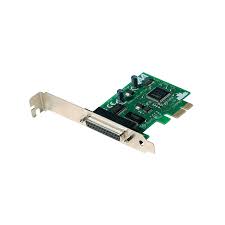Here are some details about a PCI Express parallel card:
- **Functionality:** A PCI Express parallel card is an expansion card that adds parallel ports to a computer system, typically for connecting legacy parallel devices such as printers, scanners, or industrial equipment.
- **Interface:** It connects to the computer's PCIe slot, providing high-speed parallel connectivity.
- **Parallel Ports:** The card typically features one or more parallel ports, usually in the form of DB25 or DB9 connectors.
- **Compatibility:** Compatible with various operating systems including Windows, macOS, and Linux. It works with desktop computers and servers that have an available PCIe slot.
- **Legacy Support:** Provides support for legacy parallel devices that may not be compatible with modern computers or lack built-in parallel ports.
- **Driver Support:** Some models may require installation of drivers provided by the manufacturer for full functionality.
- **Usage:** Ideal for users who require connectivity to legacy parallel devices for industrial, commercial, or personal use.
- **Speed:** Offers high-speed parallel data transfer rates, making it suitable for various applications such as printing, data acquisition, and control systems.
- **Plug-and-Play:** Typically features plug-and-play functionality, requiring minimal setup.
Overall, a PCI Express parallel card provides a convenient and efficient solution for adding parallel ports to a computer system, enabling connectivity with legacy parallel devices.
